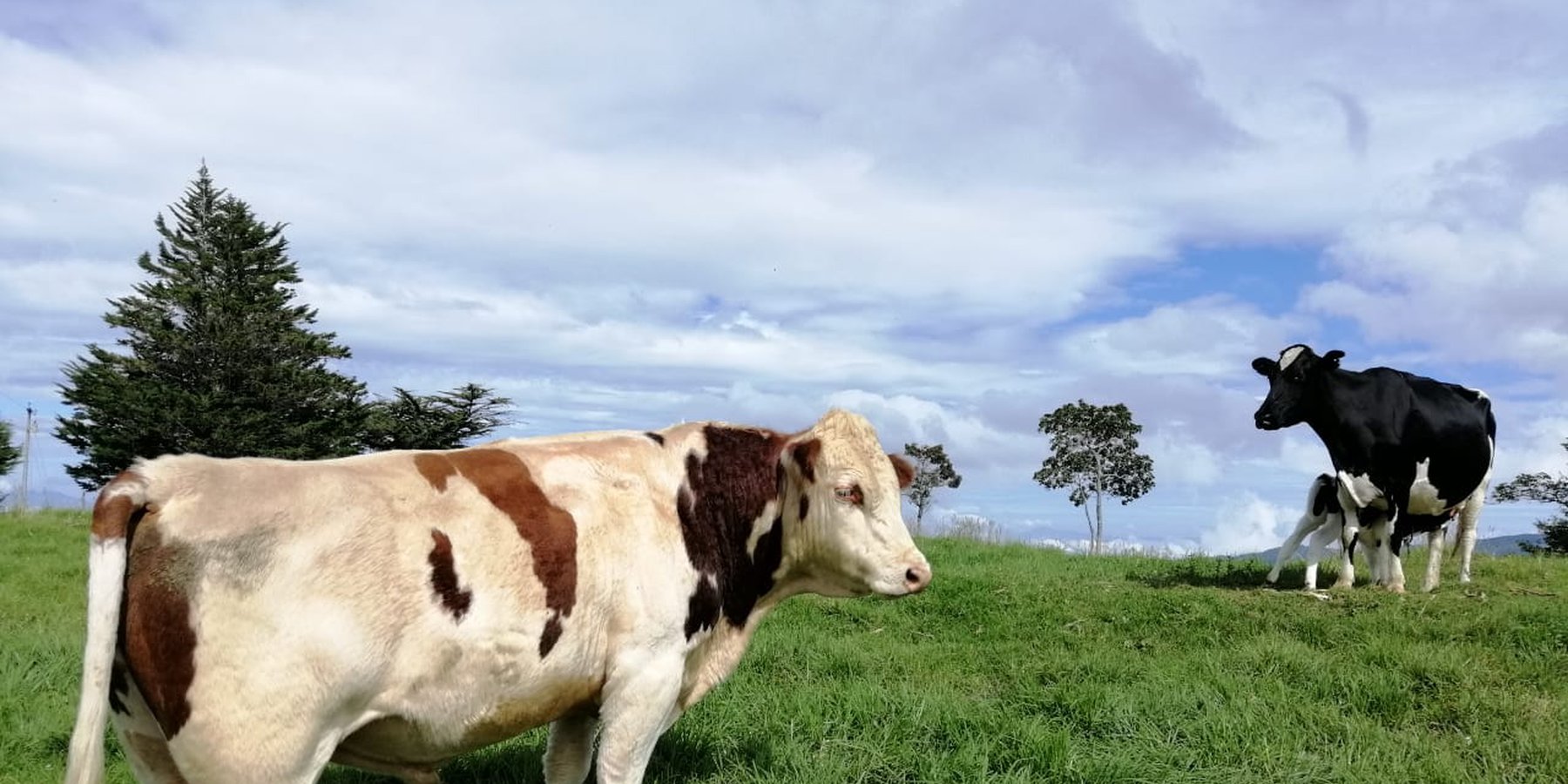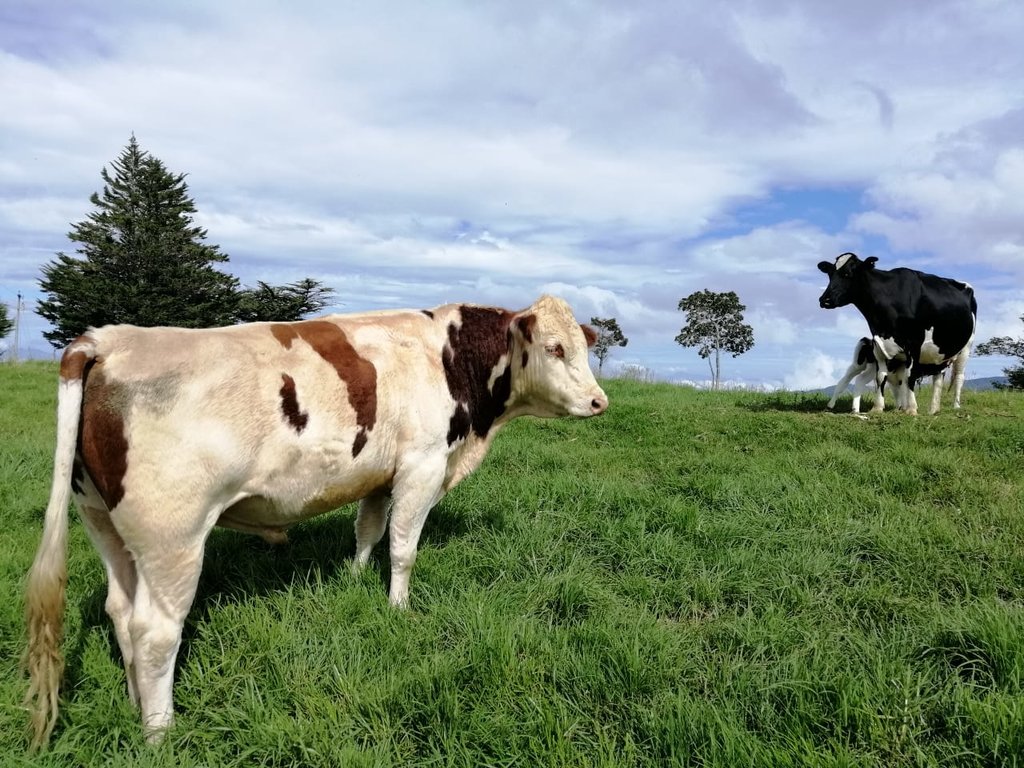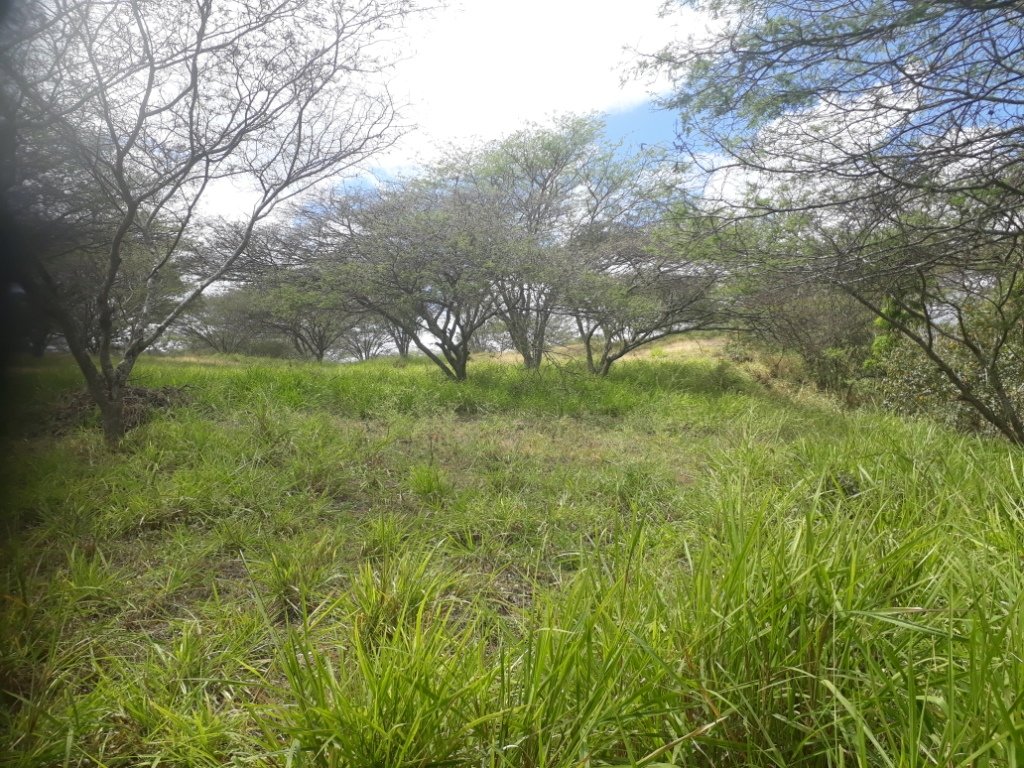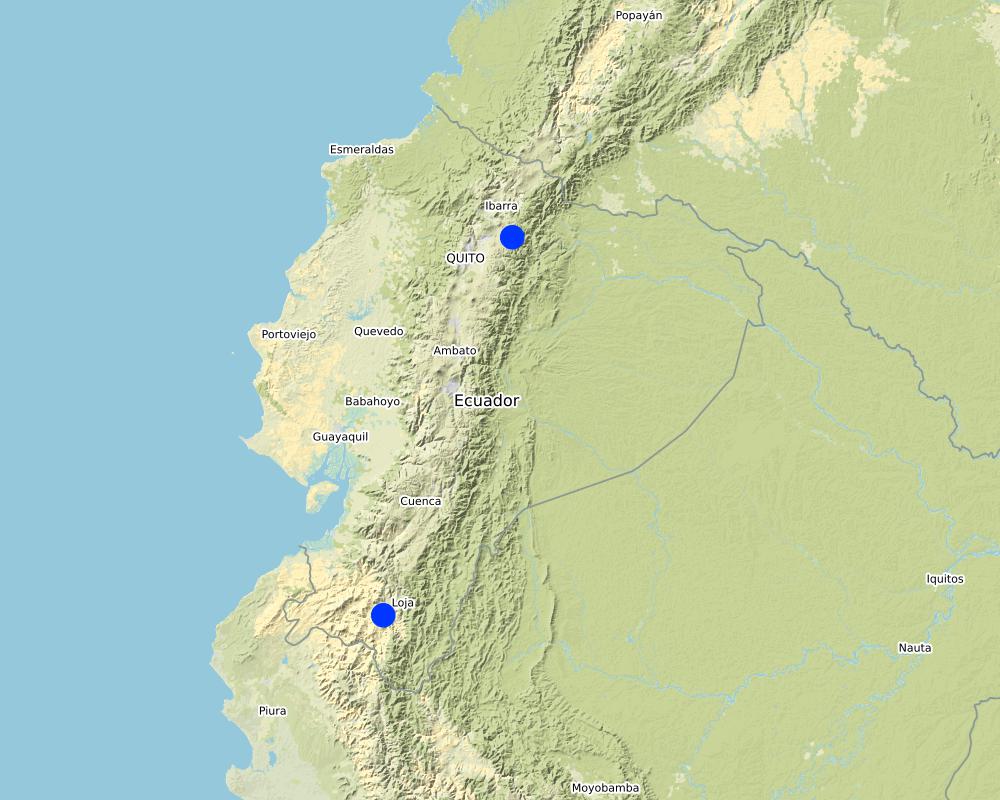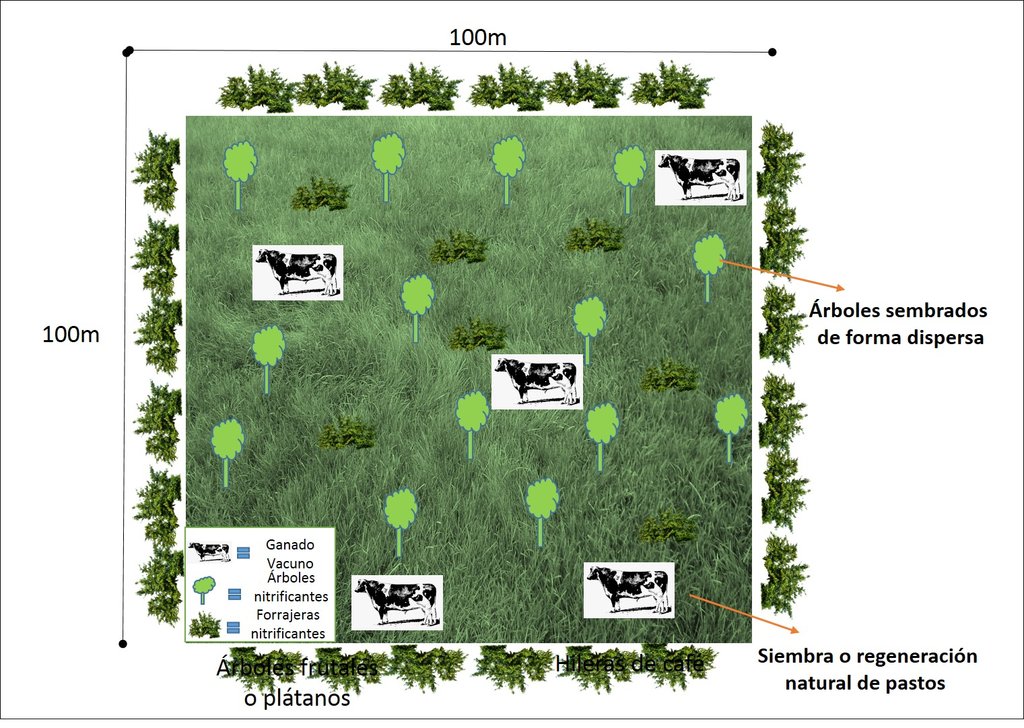Sistemas silvopastoriles [Ecuador]
- Creation:
- Update:
- Compiler: Pablo Caza
- Editor: Carlos Samaniego
- Reviewers: Giacomo Morelli, Nicole Harari, Johanna Jacobi
Sistemas pastoriles
technologies_3269 - Ecuador
View sections
Expand all Collapse all1. General information
1.2 Contact details of resource persons and institutions involved in the assessment and documentation of the Technology
Key resource person(s)
SLM specialist:
Ecuador
Name of project which facilitated the documentation/ evaluation of the Technology (if relevant)
Decision Support for Mainstreaming and Scaling out Sustainable Land Management (GEF-FAO / DS-SLM)Name of the institution(s) which facilitated the documentation/ evaluation of the Technology (if relevant)
Ministerio de Ambiente y Agua Ecuador (MAAE) - EcuadorName of the institution(s) which facilitated the documentation/ evaluation of the Technology (if relevant)
Ministerio de Agricultura y Ganadería Ecuador (MAG) - EcuadorName of the institution(s) which facilitated the documentation/ evaluation of the Technology (if relevant)
Organización de la Naciones Unidas para la Alimentación y la Agricultura Ecuador (FAO Ecuador) - Ecuador1.3 Conditions regarding the use of data documented through WOCAT
When were the data compiled (in the field)?
19/11/2019
The compiler and key resource person(s) accept the conditions regarding the use of data documented through WOCAT:
Ja
1.4 Declaration on sustainability of the described Technology
Is the Technology described here problematic with regard to land degradation, so that it cannot be declared a sustainable land management technology?
Nee
Comments:
Es una tecnología que contribuye al mejoramiento de las pasturas mediante el establecimiento de especies arbóreas, forrajeras y pastos.
2. Description of the SLM Technology
2.1 Short description of the Technology
Definition of the Technology:
Los sistemas silvopastoriles son una forma de combinar árboles o especies forrajeras con pasturas y animales dentro de una parcela. En la parroquia de Nambacola los arboles están dispersos en el potrero, y la distribución varía de 30 a 60 árboles por hectárea. Las especies más utilizadas son el faique, vainillo y porotillo.
2.2 Detailed description of the Technology
Description:
Esta tecnología es aplicada en en algunas provincias del país, auque no en grandes extensiones. Los usuarios de la tierra que establecen esta medida generalmente se siembran especies arbóreas nitrificantes como Acacia macracantha (Faique), Erythrina edulis (porotillo), Caesalpinia spinosa (porotillo o tara), entre otras, que contribuyen al mejoramiento del suelo y con ello el crecimiento adecuado de los pastos y otras especies sembradas para la alimentación del ganado. En este sistema se quiere una administración de tal manera que perduren en el tiempo los árboles, arbustos y los pastos, así como su aprovechamiento en la alimentación animal. La importancia de los mismos es que pueden aportar mucho en mantener una cobertura vegetal continua sobre el suelo, posiblemente haciéndolo más fértil a mediano plazo. Esta medida es implementada con miras de mejorar la producción de alimento para ganado vacuno, tanto en cantidad como en calidad. La variabilidad en el clima y el cambio climático son retos para la producción ganadera. Algunos productores dicen que ya no se sabe cuándo van a comenzar las lluvias. Esto es por la variabilidad en el clima. En algunos lugares del país hay menos agua que antes, tanto en los ríos como menos frecuencia de lluvias, y esto ha llevado a una baja en la productividad. En años recientes, las sequías han afectado la ganadería mucho más que en décadas anteriores. Los sistemas silvopastoriles pueden reducir el impacto del cambio climático. Es importante mantener árboles en la finca por varias razones: los animales necesitan sombra, especialmente las vacas lecheras. Durante las horas más calurosas del día, los animales tienden a buscar la sombra de un árbol para disipar calor. La segunda razón es porque pueden proveer ramas con forraje nutritivo para los animales lo que permite aumentar el rendimiento de leche por animal. Un beneficio adicional es que cuando dejamos que los árboles crezcan, ellos utilizan carbono del aire para su estructura-tronco, ramas, raíces y hojas. A esto le llaman secuestrar carbono. Si se utilizan árboles de tipo leguminosas, sus raíces tienden a mejorar el suelo. Esto se debe a su interacción con microorganismos llamados micorrizas que captan nitrógeno del aire y lo almacenan junto a las raíces de los árboles.
2.3 Photos of the Technology
2.5 Country/ region/ locations where the Technology has been applied and which are covered by this assessment
Country:
Ecuador
Region/ State/ Province:
Canton de Gonzanama, Provincia de Loja
Further specification of location:
Parroquia Nambacola, Purunuma, Changaimina y Sacapalca.
Map
×2.6 Date of implementation
If precise year is not known, indicate approximate date:
- more than 50 years ago (traditional)
2.7 Introduction of the Technology
Specify how the Technology was introduced:
- as part of a traditional system (> 50 years)
- through projects/ external interventions
Comments (type of project, etc.):
Proyecto GCI Ejecutado por FAO, en articulación directa con el Ministerio del Ambiente. Ejecución del Proyecto 2017-2020
3. Classification of the SLM Technology
3.1 Main purpose(s) of the Technology
- improve production
- reduce, prevent, restore land degradation
- adapt to climate change/ extremes and its impacts
- create beneficial economic impact
3.2 Current land use type(s) where the Technology is applied

Cropland
- Perennial (non-woody) cropping
- Tree and shrub cropping

Grazing land
Extensive grazing land:
- Ranching
Intensive grazing/ fodder production:
- Improved pastures
3.3 Further information about land use
Water supply for the land on which the Technology is applied:
- mixed rainfed-irrigated
Specify:
Al ser sistemas Pastoriles existe la producción de forraje y pasto todo el tiempo. Disminuye en la época de verano si no se cuenta con riesgo suplementario (reservorio de agua)
Livestock density (if relevant):
Con manejo 1, 5 vacas por ha; si existe manejo se puede llegar a establecer 6 vacas por ha (semiestabulado)
3.4 SLM group to which the Technology belongs
- agroforestry
- windbreak/ shelterbelt
- pastoralism and grazing land management
3.5 Spread of the Technology
Specify the spread of the Technology:
- evenly spread over an area
If the Technology is evenly spread over an area, indicate approximate area covered:
- < 0.1 km2 (10 ha)
Comments:
Tecnología que se caracteriza por la siembra de árboles o especies forrajeras con una densidad de 100 a 200 individuos por ha
3.6 SLM measures comprising the Technology

agronomic measures
- A1: Vegetation/ soil cover
- A2: Organic matter/ soil fertility

management measures
- M2: Change of management/ intensity level
3.7 Main types of land degradation addressed by the Technology

soil erosion by water
- Wt: loss of topsoil/ surface erosion

physical soil deterioration
- Pc: compaction
- Ps: subsidence of organic soils, settling of soil

biological degradation
- Bc: reduction of vegetation cover
- Bh: loss of habitats
- Bl: loss of soil life
3.8 Prevention, reduction, or restoration of land degradation
Specify the goal of the Technology with regard to land degradation:
- reduce land degradation
- restore/ rehabilitate severely degraded land
4. Technical specifications, implementation activities, inputs, and costs
4.1 Technical drawing of the Technology
4.2 Technical specifications/ explanations of technical drawing
Los sistemas silvopastoriles se caracterizan por la dispersión homogénea de arboles nitrificantes, establecidos con una densidad de 100 a 200 por ha. Al momento de establecer esta tecnología se debe cercar el área para mantener los animales dentro del área; el cercado inicialmente puede ser con alambre, sin embargo se recomienda que a la par se siembre espacies arbóreas o forrajeras para que a futuro sirvan como cercas vivas. Las especies forrajeras son establecidas también para la alimentación del ganado, aportando materia verde y proteína para una mejor alimentación de los animales.
Los pastos establecidos dentro de la tecnología pueden ser de origen natural o variedades, estas ultimas se caracterizan por proporcionar gran cantidad de materia verde con cierto porcentaje de proteína.
4.3 General information regarding the calculation of inputs and costs
Specify how costs and inputs were calculated:
- per Technology area
Indicate size and area unit:
Tecnología aplicada en una ha
Specify currency used for cost calculations:
- US Dollars
Indicate exchange rate from USD to local currency (if relevant): 1 USD =:
1.0
Indicate average wage cost of hired labour per day:
15
4.4 Establishment activities
| Activity | Type of measure | Timing | |
|---|---|---|---|
| 1. | Limpieza de terreno | Vegetative | Al inicio |
| 2. | Transporte de plantas | Other measures | Al Inicio |
| 3. | Elaboración de hoyos | Agronomic | Al Inicio |
| 4. | Siembra de plántulas | Agronomic | Al Inicio |
| 5. | Protección de plantas ( materiales de la zona) | Other measures | Al Inicio |
| 6. | Cercado del área | Structural | Al Inicio |
4.5 Costs and inputs needed for establishment
If possible, break down the costs of establishment according to the following table, specifying inputs and costs per input. If you are unable to break down the costs, give an estimation of the total costs of establishing the Technology:
300.0
| Specify input | Unit | Quantity | Costs per Unit | Total costs per input | % of costs borne by land users | |
|---|---|---|---|---|---|---|
| Labour | Limpieza de terreno | jornal | 1.0 | 15.0 | 15.0 | 100.0 |
| Labour | Elaboración de hoyos | jornal | 1.0 | 15.0 | 15.0 | 100.0 |
| Labour | Siembra de plántulas | jornal | 3.0 | 15.0 | 45.0 | 100.0 |
| Labour | Protección de plantas ( materiales de la zona) | jornal | 1.0 | 15.0 | 15.0 | 20.0 |
| Plant material | Plántulas arbóreas | Plántulas | 50.0 | 0.3 | 15.0 | |
| Plant material | Estacas forrajeras (cerca Viva) | Plántulas | 300.0 | 1.0 | 300.0 | |
| Plant material | Postes | Unidad | 100.0 | 3.0 | 300.0 | 30.0 |
| Construction material | Alambre de púas (04 hileras) | Rollo | 5.0 | 60.0 | 300.0 | |
| Construction material | Grapas kg | Libra | 5.0 | 5.5 | 27.5 | |
| Total costs for establishment of the Technology | 1032.5 | |||||
If land user bore less than 100% of costs, indicate who covered the remaining costs:
Para el establecimiento de la tecnología el usuario de la tierra cubre la mano de obra. El proyecto GCI_FAO cubre con el resto de insumos
Comments:
Los usuarios de la tierra cubren un porcentaje mínimo del costo total del la implementación de la tecnología
4.6 Maintenance/ recurrent activities
| Activity | Type of measure | Timing/ frequency | |
|---|---|---|---|
| 1. | Limpieza de terreno | Management | Frecuentemente |
| 2. | Reposición de postes | Structural | Frecuentemente |
| 3. | Mantenimiento de cercas | Structural | Frecuentemente |
Comments:
Las actividades que se deben desarrollar frecuentemente están relacionadas a la manejo de las especies sembradas (Poda y limpieza de maleza) y del mantenimiento de cercas.
4.7 Costs and inputs needed for maintenance/ recurrent activities (per year)
| Specify input | Unit | Quantity | Costs per Unit | Total costs per input | % of costs borne by land users | |
|---|---|---|---|---|---|---|
| Labour | Poda de especies sembradas | jornal | 4.0 | 15.0 | 60.0 | 100.0 |
| Labour | Mantenimiento de cercas | joenal | 4.0 | 15.0 | 60.0 | 100.0 |
| Labour | limpieza del terreno | jornal | 6.0 | 15.0 | 90.0 | 100.0 |
| Construction material | Alambre de púas (03 hileras) | Rollo | 2.0 | 60.0 | 120.0 | 100.0 |
| Total costs for maintenance of the Technology | 330.0 | |||||
If land user bore less than 100% of costs, indicate who covered the remaining costs:
Para el establecimiento de la tecnología el usuario de la tierra cubre con el 100 % de la mano de obra. Pasado el primer año de implementación de la tecnología, el usuario de la tierra deberá asumir los gastos de manejo.
4.8 Most important factors affecting the costs
Describe the most determinate factors affecting the costs:
Los costos se ven afectados por la escases de insumos
5. Natural and human environment
5.1 Climate
Annual rainfall
- < 250 mm
- 251-500 mm
- 501-750 mm
- 751-1,000 mm
- 1,001-1,500 mm
- 1,501-2,000 mm
- 2,001-3,000 mm
- 3,001-4,000 mm
- > 4,000 mm
Specify average annual rainfall (if known), in mm:
1058.00
Specifications/ comments on rainfall:
Zonas con bajas precipitaciones. Meses prolongados de verano
Agro-climatic zone
- semi-arid
5.2 Topography
Slopes on average:
- flat (0-2%)
- gentle (3-5%)
- moderate (6-10%)
- rolling (11-15%)
- hilly (16-30%)
- steep (31-60%)
- very steep (>60%)
Landforms:
- plateau/plains
- ridges
- mountain slopes
- hill slopes
- footslopes
- valley floors
Altitudinal zone:
- 0-100 m a.s.l.
- 101-500 m a.s.l.
- 501-1,000 m a.s.l.
- 1,001-1,500 m a.s.l.
- 1,501-2,000 m a.s.l.
- 2,001-2,500 m a.s.l.
- 2,501-3,000 m a.s.l.
- 3,001-4,000 m a.s.l.
- > 4,000 m a.s.l.
Indicate if the Technology is specifically applied in:
- not relevant
5.3 Soils
Soil depth on average:
- very shallow (0-20 cm)
- shallow (21-50 cm)
- moderately deep (51-80 cm)
- deep (81-120 cm)
- very deep (> 120 cm)
Soil texture (topsoil):
- coarse/ light (sandy)
- fine/ heavy (clay)
Soil texture (> 20 cm below surface):
- medium (loamy, silty)
Topsoil organic matter:
- medium (1-3%)
- low (<1%)
5.4 Water availability and quality
Ground water table:
on surface
Availability of surface water:
medium
Water quality (untreated):
for agricultural use only (irrigation)
Is water salinity a problem?
Nee
Is flooding of the area occurring?
Nee
5.5 Biodiversity
Species diversity:
- low
Habitat diversity:
- low
5.6 Characteristics of land users applying the Technology
Sedentary or nomadic:
- Sedentary
Market orientation of production system:
- mixed (subsistence/ commercial
Off-farm income:
- less than 10% of all income
Relative level of wealth:
- poor
- average
Individuals or groups:
- individual/ household
- groups/ community
Level of mechanization:
- manual work
Gender:
- women
- men
Age of land users:
- youth
- middle-aged
5.7 Average area of land owned or leased by land users applying the Technology
- < 0.5 ha
- 0.5-1 ha
- 1-2 ha
- 2-5 ha
- 5-15 ha
- 15-50 ha
- 50-100 ha
- 100-500 ha
- 500-1,000 ha
- 1,000-10,000 ha
- > 10,000 ha
Is this considered small-, medium- or large-scale (referring to local context)?
- medium-scale
5.8 Land ownership, land use rights, and water use rights
Land ownership:
- individual, titled
Land use rights:
- individual
Water use rights:
- communal (organized)
- individual
5.9 Access to services and infrastructure
health:
- poor
- moderate
- good
education:
- poor
- moderate
- good
technical assistance:
- poor
- moderate
- good
employment (e.g. off-farm):
- poor
- moderate
- good
markets:
- poor
- moderate
- good
energy:
- poor
- moderate
- good
roads and transport:
- poor
- moderate
- good
drinking water and sanitation:
- poor
- moderate
- good
financial services:
- poor
- moderate
- good
6. Impacts and concluding statements
6.1 On-site impacts the Technology has shown
Socio-economic impacts
Production
fodder production
Comments/ specify:
Aumento de cantidad de forraje
fodder quality
Comments/ specify:
Permanencia de forraje con un porcentaje de proteína aceptable
animal production
Comments/ specify:
Aumento del rendimiento de leche por unidad de animal
Income and costs
farm income
Comments/ specify:
Mayor cantidad de leche disponible para la venta
6.2 Off-site impacts the Technology has shown
water availability
6.3 Exposure and sensitivity of the Technology to gradual climate change and climate-related extremes/ disasters (as perceived by land users)
Climate-related extremes (disasters)
Climatological disasters
| How does the Technology cope with it? | |
|---|---|
| drought | very well |
6.4 Cost-benefit analysis
How do the benefits compare with the establishment costs (from land users’ perspective)?
Short-term returns:
positive
Long-term returns:
very positive
How do the benefits compare with the maintenance/ recurrent costs (from land users' perspective)?
Short-term returns:
positive
Long-term returns:
very positive
6.5 Adoption of the Technology
- 10-50%
Of all those who have adopted the Technology, how many have did so spontaneously, i.e. without receiving any material incentives/ payments?
- 10-50%
Comments:
Generalmente las los usuarios de la tierra que se dedican a la ganadería presentan este tipo de tecnologías , cada uno con algunas variaciones mínimas que están relacionadas al tipo de especies utilizadas para sembradas; esto va a depender del sitio donde se aplique la tecnología.
6.6 Adaptation
Has the Technology been modified recently to adapt to changing conditions?
Nee
6.7 Strengths/ advantages/ opportunities of the Technology
| Strengths/ advantages/ opportunities in the land user’s view |
|---|
| Disponibilidad de sombra y forraje para e ganado |
| Fijación de nitrógeno al suelo y materia orgánanica |
| Mayor producción de pastos y especies forrajeras |
| Alimento permanente para los animales |
| Mayor producción de leche por unidad de ganado |
| Strengths/ advantages/ opportunities in the compiler’s or other key resource person’s view |
|---|
| Disponibilidad de sombra y forraje para e ganado |
| Fijación de nitrógeno al suelo y materia orgánanica |
| Aumento de la producción de leche por unida de animal |
| Mayor cantidad de leche para comercializar |
| Incremento de ingresos económicos por la comercialización de leche y carne |
| Mejoramiento de la calidad de vida del usuario del la tierra |
6.8 Weaknesses/ disadvantages/ risks of the Technology and ways of overcoming them
| Weaknesses/ disadvantages/ risks in the land user’s view | How can they be overcome? |
|---|---|
| Costos de implementación de la tecnología | Gestión de recursos |
| Manejo permanente, principalmente de las especies forrajeras y de pastos |
| Weaknesses/ disadvantages/ risks in the compiler’s or other key resource person’s view | How can they be overcome? |
|---|---|
| Costos de implementación de la tecnología | Gestión de recursos |
| Manejo permanente, principalmente de las especies forrajeras y de pastos | Gestión de recursos |
7. References and links
7.1 Methods/ sources of information
- field visits, field surveys
5 informes
- interviews with land users
5 informes
- interviews with SLM specialists/ experts
2 informes
7.2 References to available publications
Title, author, year, ISBN:
http://www.ganaderiaclimaticamenteinteligente.com/documentacion.php
Available from where? Costs?
web
7.3 Links to relevant information which is available online
Title/ description:
http://www.ganaderiaclimaticamenteinteligente.com/
URL:
web
Links and modules
Expand all Collapse allLinks
No links
Modules
No modules


